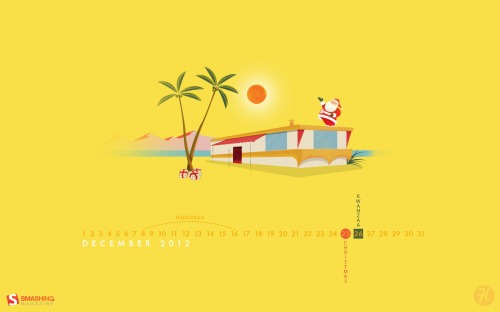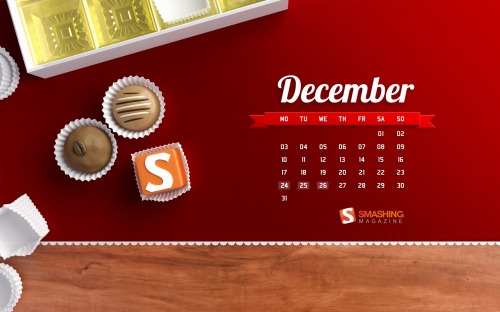There is a world where Harry Potter’s arch enemy is “Du-weißt-schon-wer,� Facebook users click the “Me gusta� button, and the Dude is named “le Duc.� This world is a translated world.
We—the people who make websites—now study almost every aspect of our trade, from content and usability to art direction and typography. Our attention to detail has never been greater as we strive to provide the best possible experience. Yet many users still experience products that lack personality or are difficult to understand.
They are users of a translated version.
When we pledge to embrace the adaptable nature of the web—to make our websites responsive and even future-ready—we’re typically talking about diversity of devices. But the web’s diversity also comes in the form of different languages and cultures.
Translation affects users’ experiences—and our organizations’ success. It’s time we consider translation part of our jobs, too.
Waiting for C-3PO
“Do you want your forum clean like this?�
I had just set up a user forum in French when I stumbled upon this rather bizarre banner. “What makes the forum so clean?� I wondered. “Do they tidy the code every day?� I had to change the language back to English to understand it: “Do you want your own forum like this?�
In French, “propre� means either “own� or “clean,� depending on how it’s used. The rule is simple; any translator would know it. More precisely, any human translator. Google Translate, the system behind the French version of the forum, obviously wasn’t so sure.
It’s not just Google Translate, either. In the 1950s, Alan Turing, the father of computer science, devised a test to evaluate machine intelligence through conversations. The biggest Turing test ever was held last June to celebrate what would have been Turing’s hundredth birthday. The winner was probably the most advanced chatbot ever created, yet Eugene Goostman—as this bot is named—failed to fool the judges 70 percent of the time. When will machines pass the test? In the year 2029—maybe.
This should come as no surprise. Languages are amongst the richest and most complex systems humankind has ever produced. When machines gain the ability to really speak (and therefore translate), it will be possible to use Google Translate in a professional context—and no doubt we’ll also have Google Design and Google Copywriting by then. But today, Google Translate is to translation what the auto mode is to photography: a quick-and-dirty solution. It comes in handy when you need to get an idea of what’s being said about your project on Weibo (China’s version of Twitter), but it isn’t a good option when you need to translate your website into Spanish.
While we’re waiting for C-3PO, we need professional translators. We must also acknowledge their creativity and recognize them as peers.
Great design deserves great translation
Translating is a respectable, valuable, creative and worthwhile use of a human brain.
Le Big Lebowski is a masterpiece. I would even argue that it surpasses the original. Everything is just perfect: the dubbing, the humor, the dialogue. The translators retained the essence of the film while adapting it for an audience that has no idea what a “dude� is. They managed to translate not just the words, but the Coen brothers’ genius as well.
E-mail service provider MailChimp is a masterpiece, too. Aarron Walter’s UX team has succeeded in creating a unique personality. Much of this personality manifests itself through copy: the greetings from Freddie, the company’s joke-cracking mascot; the always-relevant error and help messages; and—above all—the “funny but not goofy, informal but not sloppy� voice and tone used throughout the application.
Now, if MailChimp were to be translated into Spanish, Russian, or Chinese, what would become of this personality? What does it mean to be “informal but not sloppy� in Japanese? Should the mascot’s name still be “Freddie Von Chimpenheimer IV� in German, or could that be misinterpreted? Can you greet an Indian user with “Hi. You could be a part-time model�?
There are no easy answers to these questions. Translating is walking a tightrope. The challenge is to remain faithful to the original design while adapting it for a new audience, for a different culture.
If you think a machine can do this, take a look at this Google translation of MailChimp’s success message, “High fives! Your list has been imported�:
Cinco años de alta! Su lista ha sido importado.
Show that to a Spanish-speaking friend and you’re sure to get a bewildered look.
The road ahead
The web is home to plenty of innovation. But when it comes to translation, other industries are far ahead.
If we want to reap the benefits of translation, we must learn what it takes to do it well—and why it matters. Let me give you two examples.
Linguistic validation
The pharmaceutical business may not seem to share much with web design, but it has one best practice that could inspire us: linguistic validation.
Introducing a new drug into the market is a complex and controlled process that includes a long series of trials and reviews. Some of these tests involve the patients themselves, such as Patient-Reported Outcomes questionnaires, which assess whether a drug has actually improved a patient’s quality of life. These questionnaires are written in English by clinicians and then translated into hundreds of languages.
Ordinary translation is usually a two-step process: translation then proofreading (some even skip the proofreading). The linguistic validation of patient questionnaires has a few more steps, such as doing both forward and backward translations and pilot testing.
Why such a complicated and costly process? Two reasons: First, the original version is a precise research instrument. Nothing has been left to chance. Second, it is essential for patients to perfectly understand the questions, because what they report will serve as scientific data. The questionnaire must therefore be intuitive and patient-friendly.
Thoughtfully designed products, user-friendly interfaces—aren’t these what we aim for? If we care equally about all our users, it’s time we start thinking of translation as something slightly more complex than a word-to-word job.
Cultural expertise
Raving Rabbids is a humorous party game designed in Ubisoft’s Paris studio. The development team includes a localization specialist in charge of the game’s eight localized versions. She works hand in hand with designers to ensure their jokes, references, and altogether craziness are translatable. For the U.S., Rabbids’ biggest market, a duo of Americans from Nickelodeon even gave the team a little extra cultural insight.
It costs millions of dollars to produce a major video game, and even more to target international audiences. Because playing a game is such an immersive experience, the teams behind Rabbids and many other games have found that localization specialists are critical. They are not given a finished product to adapt—they take part early in the project, as their feedback on cultural matters may profoundly change the game’s design.
The game industry prefers the term “localization� to “translation� because the latter is too often restricted to text. This says a lot about how seriously game studios take cultural expertise. Because they know a cultural misfit can stall a game’s chances of success—and they know for every dollar invested in localization, there’s a $25 return.
Because they know that translation—sorry, localization—is UX.
Translate early, translate often
Most startups employ what could be called the lemonade tycoon approach: Start in your neighborhood, amongst the people you know; this is your best bet. Get it right at home before expanding into far-off lands.
I’m not saying you shouldn’t start in your own country. Local knowledge is priceless. But why wait to internationalize? Unlike lemonade selling, the web is international by nature. From day one, your website will be accessible to any person on this planet.
What’s more, procrastination has a cost. According to Smartling, a translation software company, “it can take companies 12-18 months to internationalize their code and launch their first foreign language site, absorbing much of the company’s engineering resources.�
Companies face the same problem when they develop a mobile version of their site afterward. Good thing many now adopt a “mobile first� process.
Perhaps they should consider “foreign first,� too.
It’s a big world out there
When you come from a non-English-speaking country, as I do, a “foreign first� approach is very likely to mean “English first.� But what if you’re based in New York, Manchester, or Auckland? Which language should you go for?
The answer is actually not to think “language,� but rather “opportunity� and “culture�—as these three companies have:
- Wufoo is a popular form builder from Tampa, Florida. At the beginning of 2012, it launched Wufoo Español, its first foreign version. You won’t find the Spanish version at wufoo.es, but at wufoo.com.mx—because it saw an opportunity in a neighboring market, and language was a means to reach that market. Besides, Wufoo doesn’t mix up language and local culture: It plans to roll out additional localized versions for Spain and Argentina.
- CanaDream is a Canadian RV rental company whose website is available in three languages. English and French are obvious choices, but the third one is trickier: German. Again, the company saw an opportunity—Germans love RV travel. But German people generally speak good English, don’t they? Yes, many do—but they will still prefer a company that attends to them in their own language.
- Bla Bla Car is a car-sharing service born in France. Here we can see that “English first� isn’t always the rule. Bla Bla Car’s first foreign version was in Spanish. The car-sharing market was less competitive in Spain than in other European countries, which gave Bla Bla Car the opportunity to test-run its internationalization before moving on to other markets—which it eventually did. Car sharing is getting more and more popular in Europe, and Bla Bla Car aims for leadership in the region—and in a multilingual area, this has required translation to seven languages and counting.
Bargain-basement market research
Most startups can’t afford international market research. That’s why they focus on their home market. But just as Paul Boag taught us about bargain basement usability testing, we can find affordable market research techniques, too.
Once you’ve settled on a country to target, go to ProZ and look for a translator or agency based there. Brief her about your project and send your prototype or an access to your beta. Ask her to translate the key screens. Even at this stage, you can get lots of feedback: “Are you aware your app name can hardly be pronounced—let alone remembered—by Brazilians?� “I’m sure having Acme Inc. as a client is a great reference in the U.S., but nobody knows them here.� “This photo of a blond-haired, blue-eyed guy probably won’t resonate with a Turkish market.�
Then ask your translator to run a user test using her network of proofreaders. You don’t need hundreds of people—with only ten participants, you’ll uncover any major cultural faux pas. You’ll also gain a general understanding of whether people are interested in the project, what their main questions are, and whether they like the visual design.
Finally, discuss your personas with the translator: Maybe Harriet should be renamed MarÃa and relocated to Valparaiso. And what about adding Hugo, the typical backpacker from the Netherlands? With localized personas, all your users will be given equal consideration throughout the design process.
Of course, you’ll need more precise data eventually. But this quick-and-dirty research is enough to get you started. You’ll iterate from there.
Your new teammate
When you start translating early, you make the translator part of your team. Chances are this will be a very rewarding experience. At Novius, my company, it’s changed the way we work.
For major projects, we now create and feed a glossary—or as I like to call it, a “style spreadsheet.� CSS stylesheets are understood by both designers and developers and guarantee style consistency across an entire website. Similarly, glossaries are by and for the whole team and ensure the consistency of content. Just like you want a color scheme that’s thoroughly followed, you also want to make sure “module,� “plugin,� and “extension� aren’t all used to refer to the same concept. Le fond et la forme.
We have also learned that a quality translation begins with the code. Developers strive for reusable code, and strings are no exception. Depending on how a developer handles them, he could make the translator’s job straightforward, or virtually impossible.
When dealing with sentences like, “1 person has this question� and “X people have this problem, including you,� translators are often asked to translate strings like: “person has,� “people have,� “this,� “question,� “problem,� and “including you.�
Even with context, deconstructing these sentences is a translator’s nightmare. For languages with gender, the string “this� is untranslatable (e.g., esta pregunta and este problema in Spanish). In many languages, like Russian, plurals take several forms (e.g., for the plural “persons,� you would say four челове�ка, but five челове�к). And the list goes on.
Since language isn’t code, developers and translators have a lot to learn from each other. Translators will tell them the software they use has translation memory, so there’s no need to avoid repetition. They will discuss how to handle variables in text. They will also decide together which internationalization system (such as gettext) and text file format (like XML or PO) to use.
Not a one-off thing
I won’t lie to you. Once you’ve translated your website, you’re in for good. People don’t care that they’re using a translated version. For them this is the only version. So you’ll have to keep translating.
They will hate being considered “second-rate� users. Once you’re out of beta, 90 percent translated is not OK. How would your users feel if every website update resulted in a buggy mobile version? Users of translated versions experience this all the time, with English text suddenly popping up out of nowhere. To make it worse, the newest features—proudly announced and long-awaited—are usually the ones left partially translated. Users do get the message: You’re not important enough for us to prioritize translation quality.
While good localization boosts conversion rates, bad or partial translation may ruin a user experience, giving users an uneasy feeling about the whole company: If they can’t even get their website right, how bad will the customer support be?
In fact, I recently chose not to purchase a service because of a pricing page that proclaimed, “Give a price to these ladders with your growing company.�
Guess what it was selling? Translation software.
A multilingual web
If I am selling to you, I speak your language. If I am buying, dann müssen Sie Deutsch sprechen.
The language of the web is English as much as HTML. If the web had a capital, it would be somewhere around San Francisco Bay. Web professionals worldwide use English expressions in almost every sentence: Like, browser, responsive, Tweet, SEO, etc.
However, 73 percent of internet users don’t speak English, and their numbers are growing. We now enter the age of glocalisation.
In our move toward universal design, we must not forget languages and the people who master them. “Translating is writing,� said French writer Marguerite Yourcenar.
Today we can also say, translating is designing.




























































